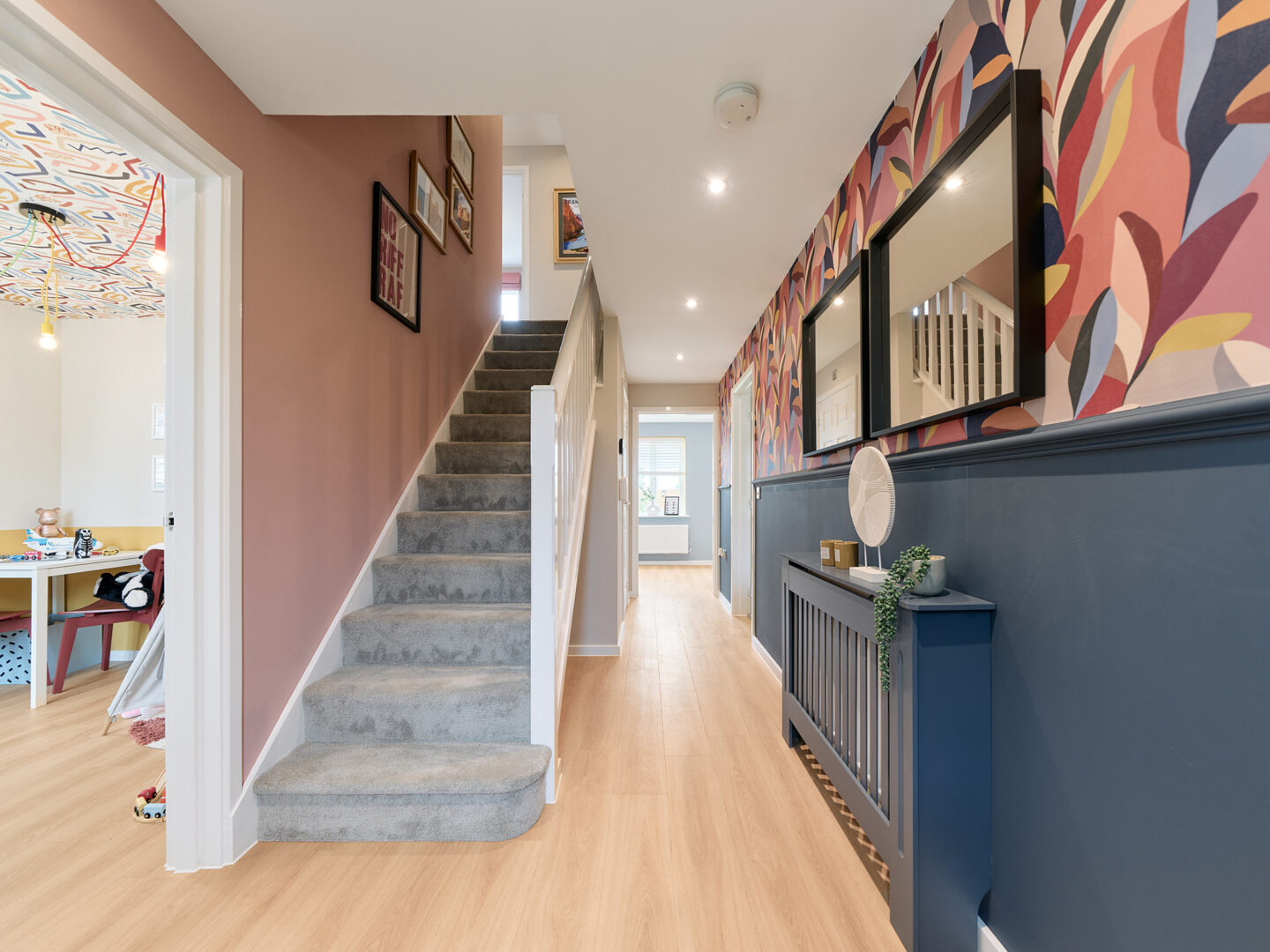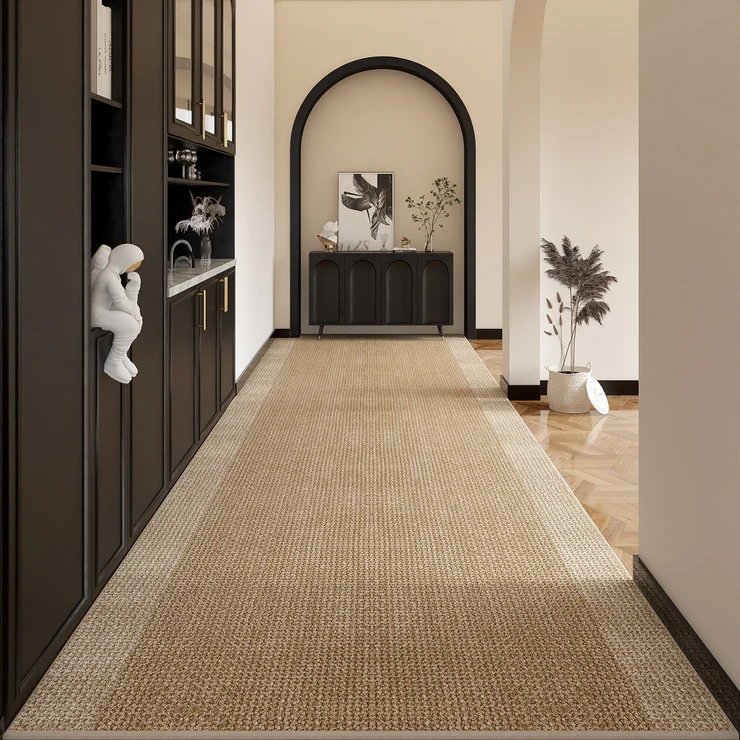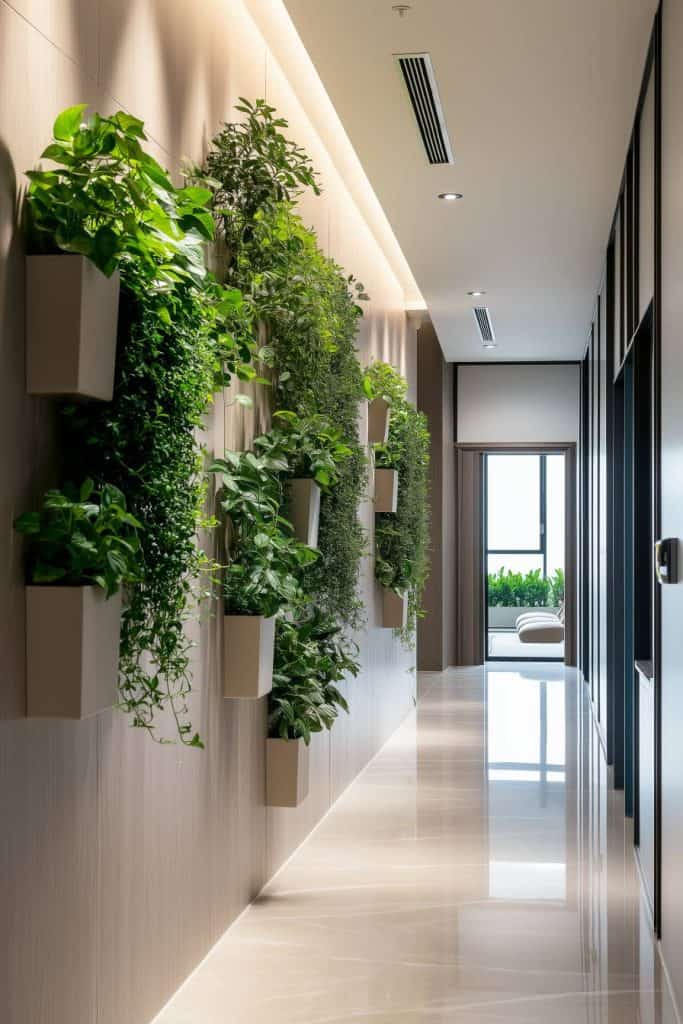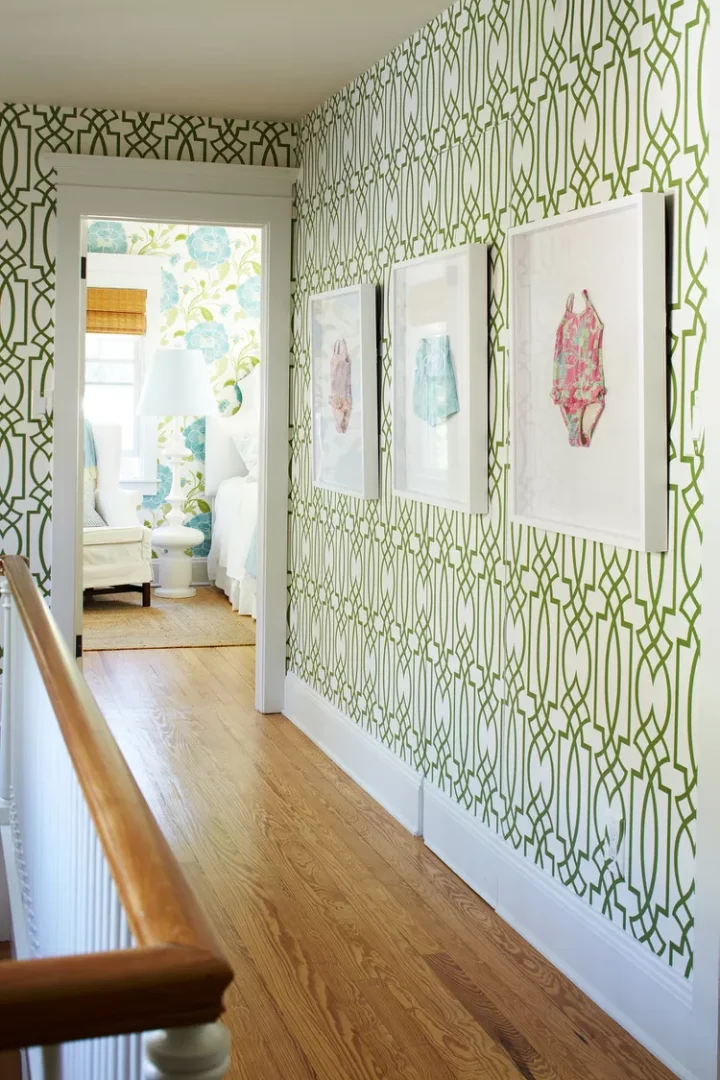A long hallway in a home or building can sometimes feel like a neglected space, merely a passageway to get from one room to another. However, with the right decorating strategies, these corridors can elevate the aesthetic appeal of a home, seamlessly connecting spaces and enhancing the overall flow. The key is to consider the size, lighting, and function of the hallway, which often dictate the decorating approach. From color schemes to lighting fixtures and artwork, each choice plays a part in creating a welcoming and interesting area within a home.

When decorating a long hallway, one should aim to create a sense of progression and movement, while ensuring the space does not become claustrophobic or cluttered. Wall colors can alter perceptions of space, with lighter hues often making a hallway seem more expansive. Strategic lighting is essential; it can highlight features, set a mood, or simply ensure sufficient illumination. Incorporating artwork, mirrors, or photographs can add personality and interest, turning the hallway into a gallery of sorts that reflects the homeowner’s tastes and passions.
Design elements such as runners, rugs, or floor patterns can also guide the eye and add warmth to the linear space. Attention to these details can make the hallway more than just a thoroughfare. It becomes part of the living experience, an area that complements and connects the spaces it leads to. With thoughtful consideration, a long hallway can be transformed into an inviting and expressive component of one’s home.
Understanding Hallway Dimensions and Potential

Source: The Architects Diary
When decorating a long hallway, recognizing the space’s dimensions is essential. A hallway’s length, width, and ceiling height influence design choices and functional enhancements.
Key Dimensions to Measure:
- Length: The distance from one end of the hallway to the other.
- Width: The space from one wall to the opposite side.
- Height: The vertical distance from the floor to the ceiling.
Potential of Various Hallway Sizes:
- Narrow and Long: Ideal for streamlined decor and continuous lines, such as runner rugs and slim wall artworks.
- Wide and Long: Offers more room for furniture, like benches, or feature installations.
- Average Dimensions: Balances both aesthetic and functional decor without overcrowding.
Design Considerations Based on Dimensions:
- Lighting: A longer hallway may need multiple light sources to eliminate shadows and create an inviting path.
- Color Scheme: Lighter colors can make the area appear more spacious, while darker hues add depth and drama.
- Storage: In a wide hallway, consider built-in storage or discreet shelving to maintain a clutter-free zone.
Maximizing Hallway Potential:
- A well-used hallway incorporates elements that both serve a purpose and enhance the area’s aesthetics.
- Reflective surfaces, art, and strategic color use lead the eye through the space, making it seem more expansive.
- Furniture should be proportional to the hallway’s dimensions to ensure a harmonious, unobstructed flow.
A comprehension of hallway dimensions and their potential is the cornerstone of effective and impactful decoration strategy.
Color Schemes and Lighting
The selection of color schemes and lighting can transform a long hallway from a simple passageway into a welcoming space. Strategic choices here affect the perceived size and ambiance of the area.

Source: Persimmon Homes
Choosing the Right Colors
Selecting a light or neutral color palette can make a hallway appear wider and more open. For example, soft shades of blue or green can instill a sense of calm and are ideal for creating an inviting area. Darker colors tend to make spaces feel smaller, so they should be used sparingly, perhaps as accent features or for artistic touches.
Maximizing Natural Light
Where available, natural light should be utilized to enhance the sense of space. Reflective surfaces, such as mirrors or high-gloss paint finishes, can be strategically placed to bounce light around the hallway. Additionally, light-toned curtains or blinds can help to diffuse light without darkening the space.
Strategic Artificial Lighting
Artificial lighting should complement natural light and the chosen color scheme. Recessed or flush-mount ceiling fixtures provide a clean look and even illumination. For added drama, wall sconces or track lighting can highlight artwork or architectural features. It’s important to select bulbs that cast a warm glow to enhance the welcoming atmosphere of the hallway.
Wall Decoration and Artwork

Source: Art Fasad
When decorating a long hallway, the walls provide a canvas for creative expression. Thoughtfully chosen wall decorations and artwork can transform a mundane passage into an engaging visual journey.
Selecting Art for Your Hallway
The artwork in a hallway should be cohesive and reflect the overall theme of the home. Size and spacing are crucial; large pieces can serve as a focal point, while smaller pieces should be spaced evenly. One should choose art by considering the hallway’s lighting and wall color to ensure that each piece stands out appropriately.
Creating a Gallery Wall
A gallery wall is an effective way to display a collection of art or photographs. To create a harmonious gallery wall:
- Select frames that complement each other and the decor.
- Lay out the arrangement on the floor before mounting.
- Keep the spacing between frames consistent, usually 2-3 inches.
- Use templates to mark nail or hook placements on the wall.
Using Mirrors to Enhance Space
Mirrors are a strategic choice for making a hallway seem larger and more open. When placing mirrors, one should consider the following:
- Position mirrors opposite a light source to maximize the reflection of light.
- A large mirror can act as an anchor piece, while smaller mirrors can be grouped.
- The frames of the mirrors should match the aesthetic of the hallway and other wall elements.
Flooring and Rugs

Source: HomePaintingDecor
Flooring and runner rugs can transform a long hallway into a visually appealing and functional space. It’s important to choose materials and designs that are durable and complement the overall aesthetic of the home.
Choosing Hallway Flooring
When selecting flooring for a hallway, one should consider materials that stand up to high foot traffic. Hardwood is a classic choice, offering durability and a timeless look. For a more cost-effective option, laminate resembles hardwood and requires less maintenance. Tile flooring provides variety in texture and style, especially beneficial for humid climates or areas prone to spills. Vinyl is another resilient option, known for its ease of installation and broad range of patterns and colors.
- Hardwood: Ideal for a high-end look, can be refinished.
- Laminate: Mimics wood or stone, withstands wear, affordable.
- Tile: Perfect for varied designs, easy to clean, extremely durable.
- Vinyl: Water-resistant, cushy underfoot, endless designs.
Rug Placement and Patterns
Rugs add warmth and can help reduce noise in a long hallway. The placement of a runner rug should leave equal space on all sides, creating balance. Ideally, a runner is 4 inches narrower than the hallway width and 18 to 24 inches shorter than its length, allowing the flooring beneath to be visible.
For pattern choice, one should consider the hallway’s width. Bold patterns can make the space feel narrower, while straight lines may lengthen the appearance of the hallway. If the hallway is wide, one might choose large-scale patterns; for narrower spaces, smaller, intricate designs or solid colors work best to create a sense of spaciousness.
- Bold Patterns: Good for spacious hallways, make strong statements.
- Straight Lines: Lengthen the hallway, ideal for runners.
- Large-scale Patterns: Suitable for wide hallways, avoid in narrow spaces.
- Small Patterns/Solid Colors: Best for narrow hallways, visually expand the space.
Furniture and Storage Solutions

Source: Homes and Gardens
When decorating a long hallway, selecting furniture and incorporating storage are crucial to maximize space and maintain aesthetics. These elements should serve both functional and decorative purposes.
Smart Furniture Choices
For a long hallway, one should opt for slim consoles or narrow benches that do not crowd the walking path. It is important to measure the hallway’s dimensions before purchasing furniture to ensure ample clearance. One example of smart furniture would be a shallow console table with a depth of no more than 10-12 inches, which provides a surface for decorative items without obstructing flow.
| Furniture Type | Dimensions | Placement Tips |
|---|---|---|
| Console Table | W: 30-40″, H: 30″, D: 10-12″ | Against the wall, centered or near an outlet for lamps. |
| Narrow Bench | W: 36-48″, H: 18″, D: 14-18″ | Underneath artwork, with storage baskets beneath. |
Incorporating Storage
Hallways benefit greatly from built-in storage solutions like wall-mounted cabinets or shelving units. One can introduce storage without sacrificing style by selecting pieces with doors that hide clutter or integrating floating shelves for a minimalist look. Within these storage solutions, baskets and bins can be utilized for organizing smaller items.
- Floating Shelves: Install at eye level, keeping items displayed minimal for an uncluttered appearance.
- Wall-mounted Cabinets: Choose models that are proportionate to the hallway, about 12-14 inches deep.
These specific strategies for choosing furniture and storage can transform a long hallway into a functional, inviting space.
Accessorizing and Styling Details

Source: Hello Hayley
Accessorizing a long hallway allows for the creation of an engaging and dynamic space. Strategic placement of elements can transform a plain area into one with character and style.
Adding Plants and Greenery
Incorporating plants and greenery into a long hallway introduces life and color. One can opt for:
- Tall plants such as fiddle leaf figs placed at intervals to create uniformity.
- Hanging plants like spider plants in corners to utilize vertical space.
Tip: Ensure plants chosen require low to moderate light if the hallway lacks natural sunlight.
Decorative Accents
A selection of decorative accents adds personality to the space. Consider:
- Mirrors with bold frames to make the hallway appear wider.
- Consistent artwork or photo frames creating a gallery effect.
Remember: Maintain a coherent theme to unify the hallway’s look.
Maintenance and Upkeep

Source: Better Homes & Gardens
Maintaining a decorated hallway requires regular attention to preserve its appearance. One should establish a routine to ensure the hallway remains inviting and clean.
Cleaning Schedule
- Daily: Sweep or vacuum the floor to remove dust and debris
- Weekly: Dust surfaces and artwork to prevent buildup
- Monthly: Clean light fixtures and check for burnt-out bulbs
Wall Maintenance
- Hallway walls may gather fingerprints or scuffs over time. Use a gentle cleaning solution suitable for the paint or wallpaper finish to spot-clean as needed.
- For gallery walls, periodically check that frames are dust-free and securely hung.
Floor Care
- If the hallway features hardwood floors, they should be polished every six months to maintain their sheen.
- For carpeted areas, a deep clean is recommended biannually to remove embedded dirt and potential allergens.
| Frequency | Task | Notes |
|---|---|---|
| Biannual | Polish floors | Use appropriate polish for material |
| Biannual | Deep clean carpet | Hire professionals if necessary |
| As required | Touch up paint | Match the exact color and finish |
Lastly, assessing the hallway’s condition seasonally can pre-empt the need for major repairs. Addressing minor issues promptly preserves the long-term integrity of the decor.
